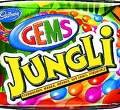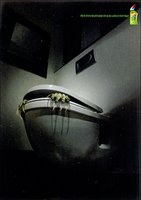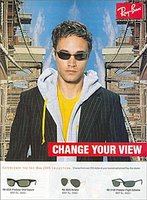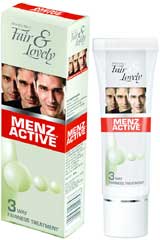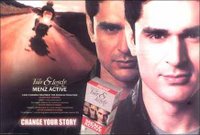Brand : Quaker Oats
Company: Frito Lay ( Pepsi co)
Brand Count : 122
Quaker Oats is the latest entry into the tough market of branded breakfast foods. Indian Branded Breakfast market is worth around Rs 300 crore. In volume terms it is 140000 tonnes. Oats market is worth around 4000 tonnes.
After the Kellogg's foray in to the breakfast market in 1990, Quaker is the only high profile product launch in this segment. Kellogg's grew the market from 1000MT to ar

ound 3000MT through heavy spent in advertising. Now Kellogg's is ruling the breakfast market but yet to break even.
Quaker's launch is significant because it comes from the Pepsi stable. With the marketing muscle and deep pocket, Will Pepsi be able to displace Idli from the Indian consumer's breakfast table ?
All through this decade, Kellogg's has been trying to do that: changing Indian consumer' s breakfast habit. With high decibel promotion targeted at adults and kids alike, Kellogg's was able to make a mark in the Crispy Cornflakes category with excellent brand recall and shelf space. But the breakfast habit still remains the same.
Quaker started testing the Indian market in 2005 and in 2006 the brand was launched across India. Quaker is a brand that has a heritage of over 125 years and is world leader in the Oat meal segment.
The Indian breakfast market assumes significance because of the growing " Health Consciousness" among the Indian middle class. Breakfast is the most important meal of the day and it accounts for 1/3 rd of all nutrient need of a person. Although Indian consumers were not bothered about the nutritional content of their foods, increasingly a trend is visible in Indian consumers becoming more aware about their nutritional needs.
Taking a lesson from Kellogg's, Quaker has launched their products at a reasonable price range even introducing trial packs for Rs 8. The idea is to induce the consumer to try the product and then make it a habit. The 400gm pack with a price of Rs 70 and 200gm for Rs 35 seems attractive compared to other brands. As a sales promotion campaign, Quaker is selling its 200gm for Rs 25.
All these promotions may cause the existing Oats takers to Quaker but how about our man who takes Idli , Dosa ?. That is a million dollar question.
Quaker is launched with a positioning based on Nutrition , Taste and Easy To Cook. The ads says that it takes only 3 minutes to cook ( same as Maggi) But as in the case of Maggi, that proposition will not work with Indian consumers. Nutrition is an important factor and regarding the taste, Quaker has cleverly came out with Masala and cardamom flavours to appeal to Indian Palate.
The main question is should the marketer try to break the habit or circumvent it. Maggi effectively introduced Noodles in to Indian market by not breaking a habit but come around the habit by targetting kids. Kellogg's is still steadfast in breaking the habit for a decade now.
I can tell from my case that I will not prefer oats for a breakfast because of the perception that it is not filling ! I may eat it for nutritional purpose but may not substitute the breakfast. I have seen people who take oats at night after the dinner for health reasons. So taking a cue from my experience ( disclaimer: I can be wrong) Oats will have a better acceptance as a nutritional component in the Indian consumer's meal. Let Oats be a part of Idli and Sambhar for complete nutrition. Once you get to the table then the brand can easily command the Indian consumer's habit.There will be more takers if this food can be positioned as "any time nutrition" rather than as a breakfast cereal. As an aggressive marketer, Quaker is head on in competition with the traditional breakfast foods.
Since this market is small ,the direct competition is less for Quaker. Bagerry is the other brand in the Oats segment . Bagerry is an Indian company which is in the market for over a decade. They are not aggressive marketer and is more of a regional player.
It is going to be a tough and expensive war for Quakers.
Source : estrategicmarketing, economictimes,magindia, sify.com,agencyfaqs.
 ggy was acquired by Godrej in 2003.
ggy was acquired by Godrej in 2003.











